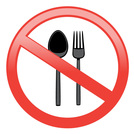 Edible plants can easily be confused with poisonous plants, which can sometimes be fatal. Even in small quantities. So take no risks. In case of emergency you can try the following to test whether a plant is edible or not. Edible does not mean the same as nutritious or useful. Test only one species and plant part (root, fruit, leaf, flower) at the same time! And DO NOT use the test for mushrooms. Clean the fresh and healthy looking plants (parts) you consider to use. Only plenty available plants are worth the risk of a test.
Edible plants can easily be confused with poisonous plants, which can sometimes be fatal. Even in small quantities. So take no risks. In case of emergency you can try the following to test whether a plant is edible or not. Edible does not mean the same as nutritious or useful. Test only one species and plant part (root, fruit, leaf, flower) at the same time! And DO NOT use the test for mushrooms. Clean the fresh and healthy looking plants (parts) you consider to use. Only plenty available plants are worth the risk of a test.
See if other animals eat the plants (and survive) or avoid. Snuff check if you like the smell.
This test is no guarantee that the relevant plant or its parts are really safe.
PHASE 1
Rub a small piece of the plant and the juice on the inside of the elbow or wrist. If after 15 minutes no skin irritation occurred (redness or itching), you can perform the following test.
PHASE 2
Put a piece of the plant between lip and teeth for five minutes. The plant is inedible when you taste a bitter, soapy, strongly acid or burning taste. But then you have already spewed it. If not: next stage..
PHASE 3 (4/5)
Chew now of this plant. Pay attention at the same experiences as above.
PHASE 4
Swallow it. Observe yourself about 8 hours: dizziness, nausea, cramps, insomnia,...
PHASE 5
Eat a larger portion of the same. If this goes well, the plant is edible and you can probably use it for a complete meal on the third day.
There are dozens of poisonous plants (trees, fruits, leaves, roots, seeds). How toxic or dangerous an intake is also depends on the season, the habitat etc. but of course mostly on the quantity. Many of these poisons are in very small amounts even used as a medicine. Some are dangerous if you only eat impossible quantities. Some are fatal in small quantities.https://en.wikipedia.org/wiki/List_of_poisonous_plants
